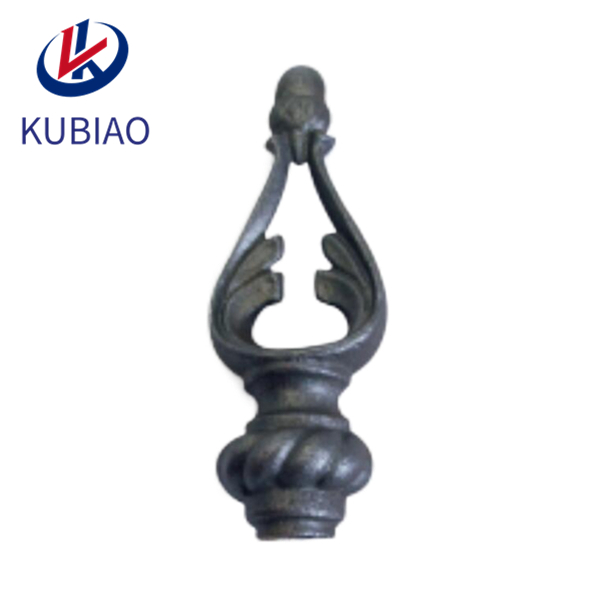
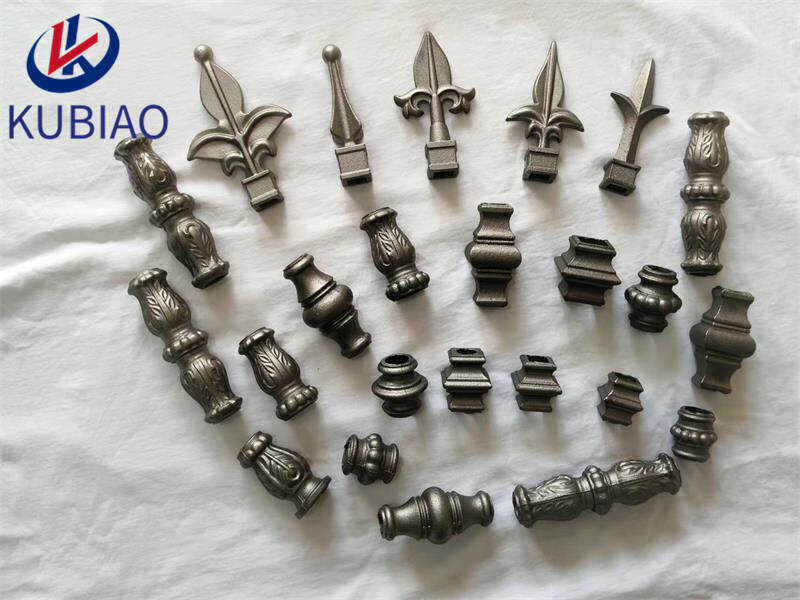
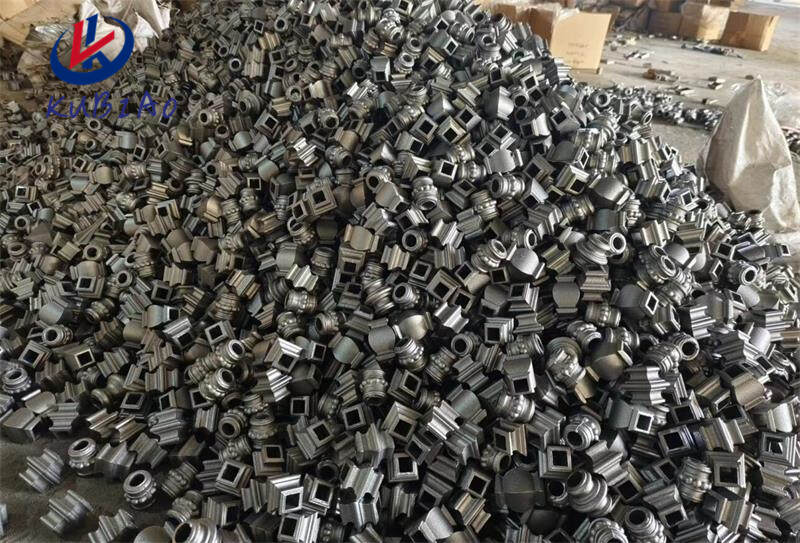
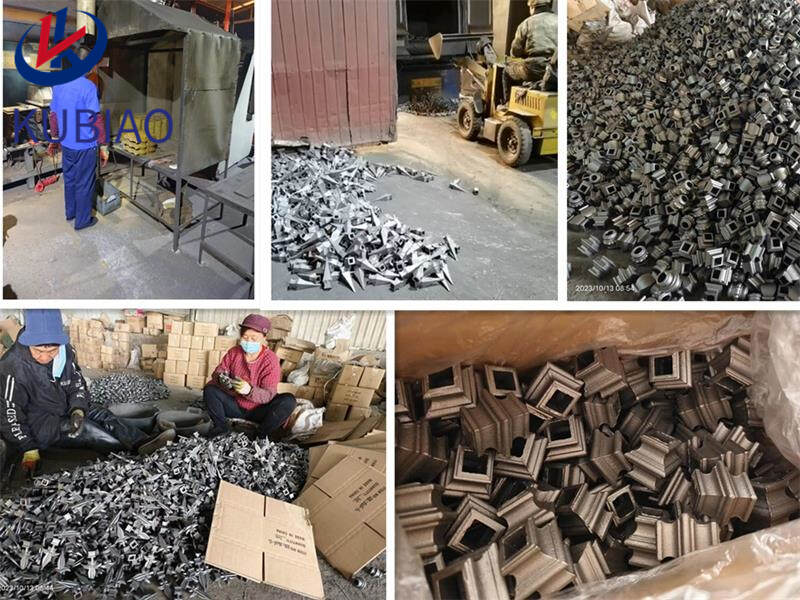
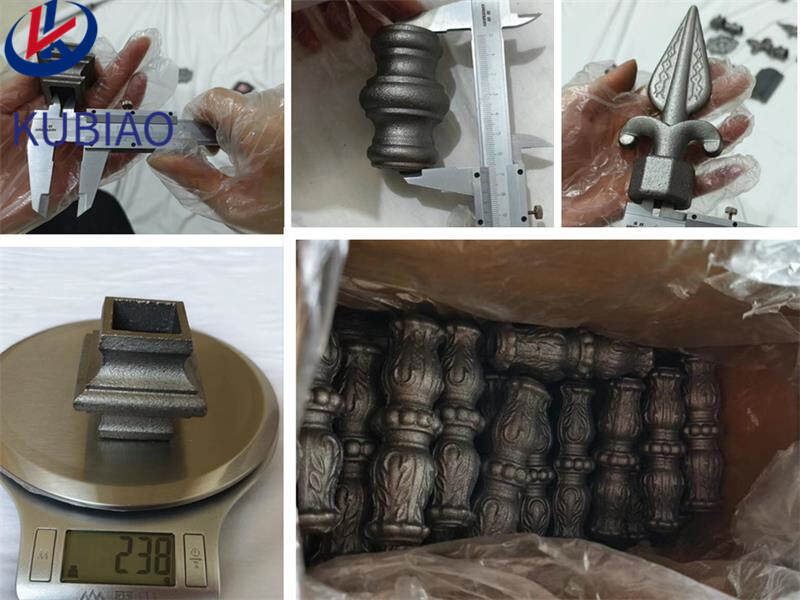
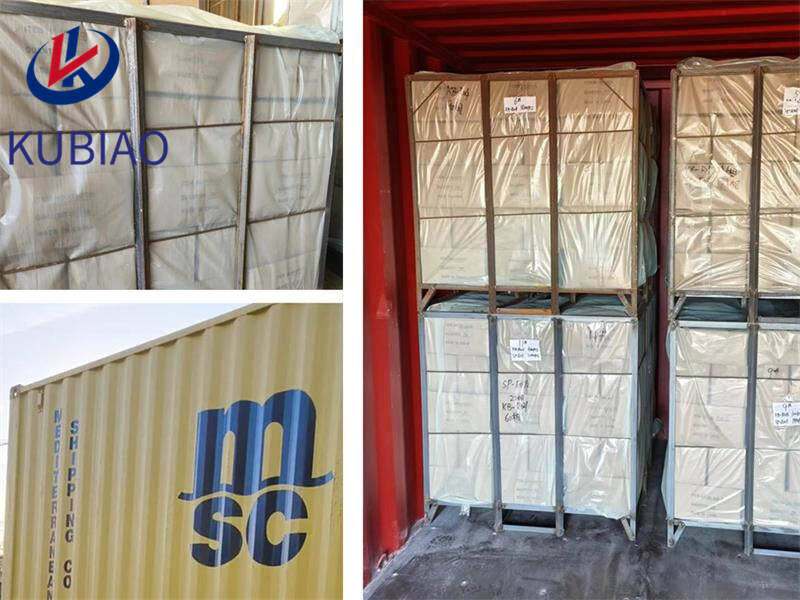
|
Product name |
ornamental cast iron fence fittings |
|
Keyword |
ornamental iron components ,ornamental fence iron spear ,cast iron stud ,cast iron fence spears,cast iron spear,ornamental cast iron collar,fence ornaments |
| Place of Origin | China |
|
Quality standard |
We have our own professional QC team to insure the quality. |
|
Feature |
Cast iron is a strong metal material that can withstand large amounts of pressure and weight. It is also durable and resistant to corrosion, making it ideal as a decorative item |
|
Application scope |
outdoor, etc. |
|
surface treatment |
sand blasting antirust antirust oil/water painting hot dip galvanizing |
|
Unit Weight(g) |
312(Contact us for specific information to confirm) |
|
terms of payment |
50% T/T in advance, balance before shipment. |
|
Life span |
20 years (Contact us for specific information to confirm) |
|
delivery time |
It usually takes 40 days. |
|
Advantage |
We keep good quality and competitive price to ensure our customers benefit |
|
Packing |
Carton with pallet |
|
OEM/ODM |
Customization Service Provided |
|
design |
beautiful elegance sleek pretty |
|
Sales country |
All over the world for example:Wallis and Futuna,Qatar,Portugal,Somalia,Kenya,Turks and Caicos Islands |
|
MOQ |
500pcs(Contact us for specific information to confirm) |
1.Are there any DIY techniques for creating my own ornamental cast iron fence fittings ?
We have a good reputation and image in the industry. The quality and price advantage of ornamental cast iron fence fittings products is an important factor in our hard overseas market.
1. Sand Casting: This method involves creating a mold using sand and pouring molten cast iron into it. You can use a wooden pattern or a 3D printed mold to create intricate designs. Once the iron has cooled and solidified, the sand can be removed to reveal the ornament.
2. Clay Casting: Similar to sand casting, this method involves creating a mold using clay instead of sand. The clay can be molded into any shape or design and then coated with a layer of sand before pouring in the molten iron. Once cooled, the clay can be removed to reveal the ornament.
3. Lost Wax Casting: This technique involves creating a wax model of the ornament and then coating it with a layer of ceramic. The wax is then melted out, leaving a hollow ceramic mold. Molten iron is then poured into the mold and once cooled, the ceramic can be broken away to reveal the ornament.
4. Repurposed Molds: You can also use existing objects such as cookie cutters, silicone molds, or even household items like bottle caps or keys to create unique cast iron ornaments. Simply pour the molten iron into the mold and let it cool before removing the ornament.
5. Sandpaper Etching: If you don't have access to molten iron, you can still create a cast iron look by using sandpaper to etch designs onto a piece of metal. You can then paint the metal with a rust-colored paint to give it an aged look.
6. Welding: If you have some welding skills, you can create your own cast iron ornaments by welding together pieces of scrap metal. You can use a grinder to smooth out any rough edges and give it a more polished look.
7. 3D Printing: If you have access to a 3D printer, you can design and print your own cast iron ornaments using a special filament that contains iron particles. Once printed, the ornament can be heated to fuse the iron particles together, giving it a cast iron appearance.
Remember to always take proper safety precautions when working with molten iron or welding equipment. It is also important to properly dispose of any leftover materials and follow local regulations for metalworking.
2.How do I properly hang or display ornamental cast iron fence fittings ?
We have a wide range of ornamental cast iron fence fittings customer groups and establishes long -term cooperative relationships with partners. The countries we provide services include Wallis and Futuna,Qatar,Portugal,Somalia,Kenya,Turks and Caicos Islands.
1. Choose a sturdy and secure location: Cast iron ornaments can be heavy, so it is important to choose a location that can support their weight. Avoid hanging them on weak or flimsy surfaces.
2. Use appropriate hardware: Make sure to use strong and durable hardware, such as heavy-duty hooks or screws, to hang your cast iron ornaments. Avoid using adhesive hooks or tape, as they may not be strong enough to hold the weight.
3. Consider the weather: If you are hanging your cast iron ornaments outdoors, make sure to use weather-resistant hardware and consider the elements. For example, if you live in a windy area, you may need to use additional hardware or secure the ornament with wire to prevent it from falling.
4. Use a level: Before hanging your ornament, use a level to ensure it is straight and even. This will help prevent it from tilting or falling off the wall.
5. Hang with care: When hanging your ornament, make sure to handle it with care to avoid damaging it. If the ornament has delicate or intricate details, use a soft cloth or gloves to handle it.
6. Display on a stand: If you prefer not to hang your cast iron ornament, you can also display it on a stand or shelf. Make sure the stand is sturdy enough to support the weight of the ornament.
7. Group similar ornaments together: If you have multiple cast iron ornaments, consider grouping them together for a cohesive display. This can also help distribute the weight evenly and prevent any one ornament from becoming too heavy for the display surface.
8. Regularly check for damage: Cast iron ornaments can be prone to rust and corrosion, especially if displayed outdoors. Make sure to regularly check for any signs of damage and address them promptly to prevent further deterioration.
3.What is the history of ornamental cast iron fence fittings ?
We pay attention to the introduction and training of talents, scientifically regulate the management system, and focus on cultural construction and team cohesion.
Cast iron ornaments have a long and rich history dating back to ancient civilizations. The use of cast iron for decorative purposes can be traced back to the 5th century BC in China, where it was used to create intricate and ornate objects such as bells and statues.
In Europe, the use of cast iron for decorative purposes began in the 15th century, with the production of cast iron firebacks and grates for fireplaces. These were often adorned with intricate designs and patterns, and were considered a symbol of wealth and status.
During the Industrial Revolution in the 18th and 19th centuries, cast iron became more widely available and affordable, leading to an increase in its use for decorative purposes. Cast iron ornaments were used to decorate buildings, parks, and gardens, and were also popular as household items such as door knockers, garden furniture, and garden urns.
In the late 19th and early 20th centuries, the Victorian era saw a surge in the popularity of cast iron ornaments. The ornate and elaborate designs of the Victorian era were perfectly suited to the versatility of cast iron, and it was used extensively in the construction of buildings, bridges, and other structures.
However, with the advent of new materials such as steel and aluminum, the use of cast iron for decorative purposes declined in the 20th century. It was not until the lat<
br> 20th century that there was a renewed interest in cast iron ornaments, with a growing appreciation for their historical and aesthetic value.
Today, cast iron ornaments are still used to decorate buildings, parks, and gardens, and are also popular as collectibles and antiques. They are valued for their durability, intricate designs, and historical significance, and continue to be a popular choice for adding a touch of elegance and charm to any space.
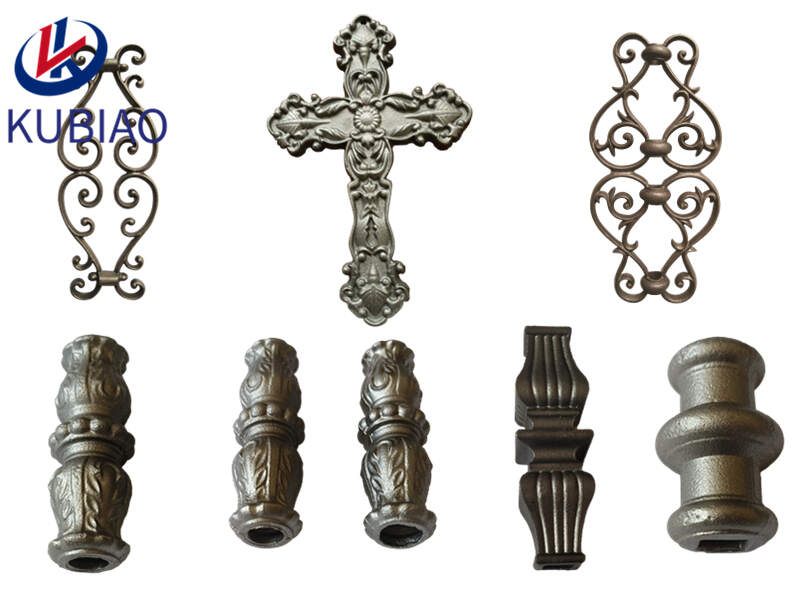
4.What are the differences between antique and new ornamental cast iron fence fittings ?
We continuously upgrade our skills and knowledge to adapt to changing ornamental cast iron fence fittings market needs.
1. Age: The most obvious difference between antique and new cast iron ornaments is their age. Antique cast iron ornaments are typically at least 100 years old, while new ones are recently manufactured.
2. Design: Antique cast iron ornaments often have intricate and detailed designs, reflecting the craftsmanship of the time period they were made in. New cast iron ornaments may have simpler and more modern designs.
3. Rarity: Due to their age, antique cast iron ornaments are often more rare and harder to find than new ones. This can make them more valuable to collectors.
4. Quality: Antique cast iron ornaments were often made with high-quality materials and craftsmanship, resulting in a more durable and long-lasting product. New cast iron ornaments may not have the same level of quality and may be more prone to damage.
5. Patina: Antique cast iron ornaments have a natural patina that develops over time, giving them a unique and aged appearance. New cast iron ornaments may lack this patina and may look more uniform and shiny.
6. Price: Due to their rarity and historical value, antique cast iron ornaments can be more expensive than new ones. New cast iron ornaments are often more affordable and readily available.
7. Authenticity: Antique cast iron ornaments have a sense of authenticity and history that cannot be replicated in new ones. They have a story and a connection to the past that adds to their charm and value.
8. Collectibility: Antique cast iron ornaments are highly sought after by collectors, making them a valuable and desirable item. New cast iron ornaments may not hold the same level of collectibility.
9. Condition: Antique cast iron ornaments may have some wear and tear due to their age, while new ones are in pristine condition. This can affect their appearance and value.
10. Purpose: Antique cast iron ornaments were often used for practical purposes, such as architectural details or garden decorations. New cast iron ornaments may be more decorative and used solely for aesthetic purposes.
5.What colors can ornamental cast iron fence fittings come in?
As one of the top ornamental cast iron fence fittings manufacturers in China, we take this very seriously.
Cast iron ornaments can come in a variety of colors, including:
1. Black: This is the most common color for cast iron ornaments, as it is the natural color of the material.
2. Bronze: Cast iron can be treated with a bronze finish to give it a warm, metallic look.
3. White: Some cast iron ornaments may be painted white for a more modern or shabby chic look.
4. Rust: Over time, cast iron can develop a rust patina, giving it a unique and aged appearance.
5. Green: Some cast iron ornaments may be painted green for a vintage or antique look.
6. Gold: Cast iron can be treated with a gold finish for a luxurious and elegant look.
7. Silver: Similar to gold, cast iron can also be treated with a silver finish for a more modern and sleek appearance.
8. Blue: Some cast iron ornaments may be painted blue for a pop of color and a whimsical touch.
9. Red: Red is another popular color for cast iron ornaments, especially during the holiday season.
10. Custom colors: Cast iron ornaments can also be painted or coated in any custom color to match a specific theme or decor.
6.What are ornamental cast iron fence fittings ?
We have flexible production capacity. Whether you are large orders or small orders, you can produce and release goods in a timely manner to meet customer needs.
Cast iron ornaments are decorative objects made from cast iron, a type of iron that is heated until it becomes molten and then poured into a mold to create a specific shape. These ornaments can range from small figurines and sculptures to larger architectural elements such as columns, balusters, and finials. They are often used to add a touch of elegance and charm to gardens, homes, and other outdoor spaces. Cast iron ornaments are known for their durability and can withstand harsh weather conditions, making them a popular choice for outdoor decor. They can also be painted or finished in various colors and styles to suit different design preferences.
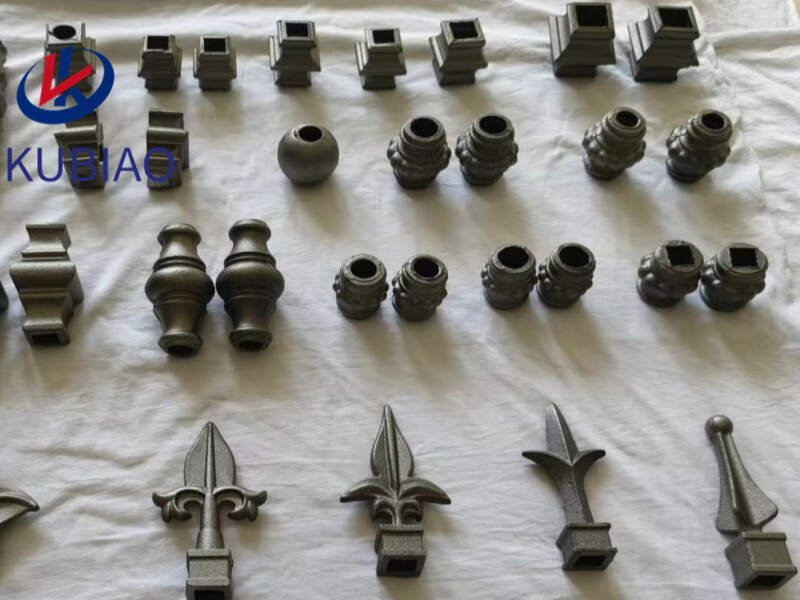
7.Are there any common design elements found in ornamental cast iron fence fittings ?
1. Intricate Details: Cast iron ornaments often feature intricate and detailed designs, such as floral patterns, scrollwork, and geometric shapes.
2. Curved and Organic Shapes: Many cast iron ornaments have curved and organic shapes, which are achieved through the casting process.
3. Symmetry: Symmetry is a common design element in cast iron ornaments, with designs often being mirrored on both sides.
4. Repetition: Many cast iron ornaments feature repeated patterns or motifs, creating a sense of unity and cohesion in the design.
5. Textures: Cast iron ornaments can have a variety of textures, including smooth, rough, and hammered surfaces, adding visual interest and depth to the design.
6. Finials and Fleur-de-lis: Finials, which are decorative end pieces, and fleur-de-lis, a stylized lily flower, are commonly found in cast iron ornaments, adding a touch of elegance and sophistication.
7. Gothic and Victorian Influences: Cast iron ornaments often draw inspiration from Gothic and Victorian architecture, featuring pointed arches, spires, and intricate details.
8. Natural Elements: Many cast iron ornaments incorporate natural elements, such as leaves, flowers, and animals, into their designs.
9. Rustic and Industrial Aesthetics: Cast iron ornaments can also have a rustic or industrial aesthetic, with rough textures and simple, geometric designs.
10. Black or Dark Colors: Due to the nature of cast iron, most ornaments are black or dark in color, adding a sense of drama and contrast to the design.
8.Can I use ornamental cast iron fence fittings in a minimalist or modern decor style?
We pay attention to the transformation of intellectual property protection and innovation achievements. Your OEM or ODM order design we have a complete confidentiality system.
Yes, cast iron ornaments can be used in a minimalist or modern decor style. They can add a touch of texture and contrast to a clean and simple space. The key is to choose pieces that have a sleek and simple design, rather than ornate or intricate details. You can also incorporate them in a monochromatic color scheme to create a cohesive and modern look.
9.Are ornamental cast iron fence fittings suitable for indoor use?
We have been working hard to improve service quality and meet customer needs.
Yes, cast iron ornaments can be suitable for indoor use. However, they may require regular maintenance to prevent rusting and should be kept away from moisture. It is also important to ensure that they are properly secured to prevent any accidents.
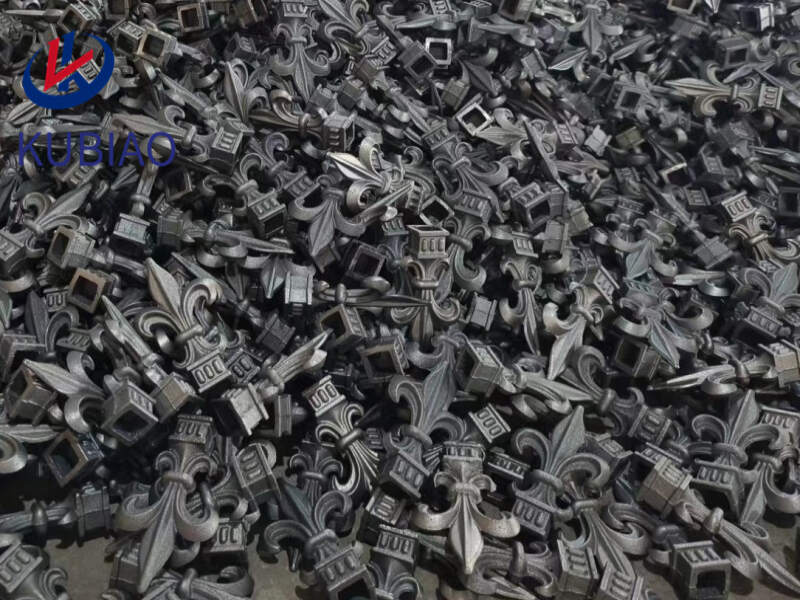
10.What are the cost differences between ornamental cast iron fence fittings and other types of decorations?
I have a comprehensive after -sales service system, which can pay attention to market trends in time and adjust our strategy in a timely manner.
The cost differences between cast iron ornaments and other types of decorations can vary depending on the specific item and where it is purchased. Generally, cast iron ornaments tend to be more expensive than other types of decorations such as plastic or resin ornaments. This is because cast iron is a more durable and high-quality material that requires more labor and resources to produce. Additionally, cast iron ornaments often have intricate designs and details that add to their cost. On the other hand, plastic or resin ornaments are typically mass-produced and can be made at a lower cost, resulting in a lower price point. Ultimately, the cost differences between cast iron ornaments and other types of decorations will depend on the specific product and its features.
11.How can I clean and maintain ornamental cast iron fence fittings ?
We have established a good reputation and reliable partnerships within the ornamental cast iron fence fittings industry.
1. Remove any dirt or debris: Use a soft-bristled brush or cloth to remove any dirt or debris from the surface of the cast iron ornament.
2. Wash with mild soap and water: Mix a small amount of mild soap with warm water and use a cloth or brush to gently scrub the ornament. Rinse with clean water and dry thoroughly with a towel.
3. Remove rust: If there is any rust on the ornament, use a wire brush or sandpaper to gently scrub it off. You can also use a commercial rust remover if the rust is stubborn.
4. Apply a protective coating: To prevent future rusting, apply a thin layer of oil or a specialized cast iron sealer to the ornament. Be sure to follow the manufacturer's instructions for application.
5. Store in a dry place: Moisture can cause cast iron to rust, so it is important to store your ornaments in a dry place when not in use.
6. Avoid harsh chemicals: Avoid using harsh chemicals or abrasive cleaners on your cast iron ornaments as they can damage the surface.
7. Regularly inspect and touch up: Inspect your ornaments regularly for any signs of rust or damage. If you notice any, clean and touch up the affected area immediately to prevent further damage.
8. Protect from extreme temperatures: Extreme temperatures can cause cast iron to expand and contract, leading to cracks or damage. Avoid exposing your ornaments to extreme heat or cold.
9. Handle with care: Cast iron ornaments can be heavy and fragile, so handle them with care when moving or storing them.
10. Seek professional help if needed: If your cast iron ornament is heavily rusted or damaged, it may be best to seek professional help for restoration.
12.Can ornamental cast iron fence fittings be used in both traditional and modern decor styles?
We maintain a certain amount of R&D investment every year and continuously improve operational efficiency to provide better services to our cooperative customers.
Yes, cast iron ornaments can be used in both traditional and modern decor styles. They can add a touch of vintage charm to traditional decor, while also bringing a bold and industrial element to modern decor. The versatility of cast iron ornaments allows them to be incorporated into a variety of design styles, making them a popular choice for home decor.
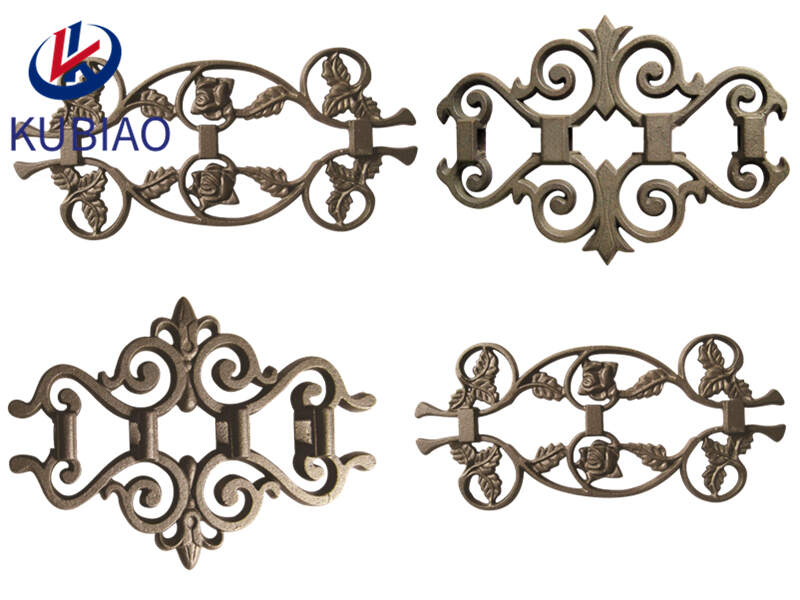
13.How do I determine the quality of ornamental cast iron fence fittings ?
We adhere to the principle of quality first and have a complete production quality management system and quality inspection process.
1. Weight: High-quality cast iron ornaments will feel heavy and solid in your hand. This is because cast iron is a dense and heavy material, so if the ornament feels lightweight or flimsy, it may be made of a lower quality material.
2. Smoothness: Run your hand over the surface of the ornament to feel for any rough or uneven areas. High-quality cast iron ornaments will have a smooth and even surface, with no bumps or imperfections.
3. Detailing: Look closely at the details of the ornament. High-quality cast iron ornaments will have crisp and intricate detailing, with no signs of smudging or blurring. Lower quality ornaments may have less defined details or may appear sloppy.
4. Finish: The finish of the ornament can also indicate its quality. High-quality cast iron ornaments will have a smooth and even finish, with no visible flaws or rough spots. Lower quality ornaments may have a rough or uneven finish, or may even have visible casting lines.
5. Rust resistance: Cast iron is prone to rust, so high-quality cast iron ornaments will have a protective coating or finish to prevent rusting. Check for any signs of rust or corrosion on the ornament, as this can indicate a lower quality product.
6. Durability: A good quality cast iron ornament should be able to withstand outdoor elements and last for many years. If the ornament feels flimsy or fragile, it may not be of good quality and may not last as long.
7. Price: While price is not always an indicator of quality, high-quality cast iron ornaments are typically more expensive than lower quality ones. If the price seems too good to be true, it may be an indication of lower quality.
8. Brand reputation: Do some research on the brand or manufacturer of the cast iron ornament. Reputable brands are more likely to produce high-quality products, so purchasing from a trusted brand can increase the chances of getting a good quality ornament.
14.Are there any famous artists or designers known for their ornamental cast iron fence fittings ?
We have the leading technology and innovation capabilities, and attach importance to employee training and development, and provide promotion opportunities.
1. Thomas Jefferson
2. Gustave Eiffel
3. Antoni Gaudí
4. Louis Sullivan
5. Hector Guimard
6. Daniel Chester French
7. Augustus Saint-Gaudens
8. John Flanagan
9. René Lalique
10. Louis Comfort Tiffany
Welcome to contact us for Cast Iron Order!
Alex Chen
Email: sales@kubiaometal.com
Cellphone/Whatsapp: 0086 13020588163
Wechat: 13028588163
Tag:iron studs ,ornamental cast iron rosettes,ornamental iron components ,cast iron fence toppers,cast ornament ,decorative rosette
PREV: ornamental cast iron spearheads
NEXT: metal spearheads
Product
Category